It’s remarkable that I am still in disbelief about having played through Final Fantasy VII Remake. Not because it took its sweet time being made, but because almost everything I experienced in my 40-hour play-through of the game was surprising, rewarding and breathtaking all at the same time.
For what this first entry of a larger saga covers, this is a game that clearly understands the characters, legacy and important moments from the original 1997 title, but it doesn’t end there. The remake uses its opportunity to expand the overall narrative of Final Fantasy VII’s opening hours, opting to flesh out more of what it has to work with than to rush through. With this approach follows some of the best writing in the entire Final Fantasy series.
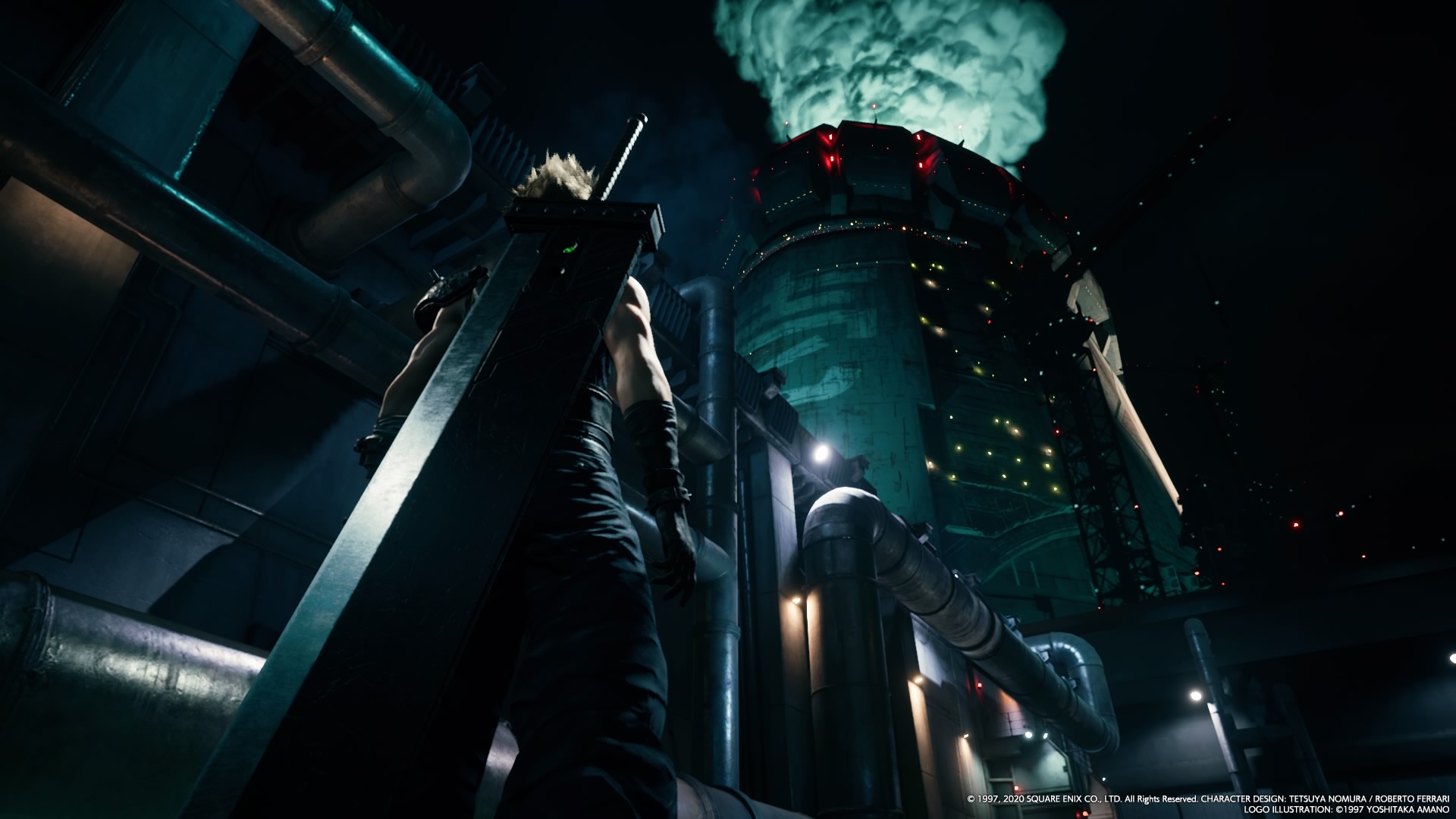
FFVIIR is set within the industrial city of Midgar, owned by a mega corporation known as the Shinra Electric Power Company. The story begins with Cloud Strife, a cool and skilled mercenary hired by the eco-terrorist group Avalanche to infiltrate and destroy one of Shinra’s reactors, which are sapping the planet’s life source to supply the city with electricity. This will sound familiar to anyone that’s played through the original RPG, and that goes the same for the later plot points. But what makes them so refreshing in FFVIIR is how different the story and its mysteries unfold. In particular, there’s a bigger emphasis on character building which indirectly helps to contextualize the consequences of the events that occur throughout the story.
Familiar characters in FFVIIR are grounded in their expressions, speaking in a manner that sounds organic and real. You’ll even hear a few of them curse while talking to other characters or reacting to a situation, and they do so effortlessly. Each of their flaws, motives and traits feel a little more relatable too, and the remake includes new sequences in the story that builds them up even further. They’re just written so well, and the English voice talent behind the game do a great job with the material. Hearing the banters from Cloud and crew during gameplay and cutscenes is always a treat, and one of my biggest highlights with the remake.
There are also new characters that inhabit the various sectors of Midgar, and their roles and personalities help enhance the believability of the locations they are set in. Side-quests in the remake also open up extra bits of world building as you interact with some of those inhabitants to solve their everyday problems. Some are more enjoyable than others for the extra character moments you eventually get with the main cast, but really, they’re just padded filler with simple stories used to extend the game’s overall length. Completing them will net you some decent-to-important rewards though, and can change how certain scenes play out later in the story.
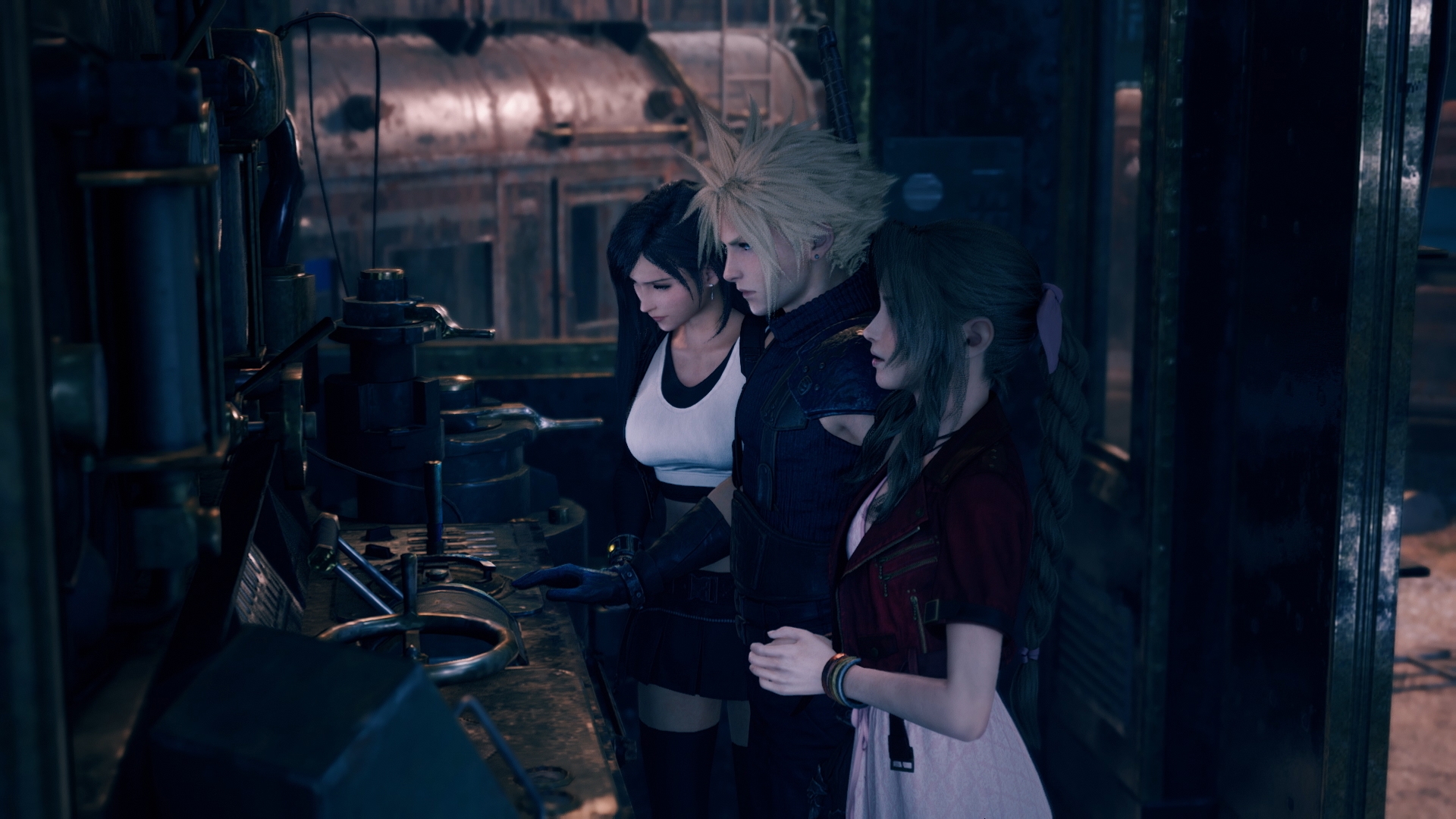
Even the sillier moments of FFVIIR—like the quick distractions of its mini-games—are fun to play through, and it’s so weird and interesting to see how the game shifts its tone to something light-hearted while not forgetting all the seriousness that’s happening elsewhere in the story. The melodrama does slip into the writing on occasion, and while I much prefer a story filled with more subtlety, I was able to tolerate it because of how much I enjoyed everything else they did with the narrative. Unfortunately, without going into spoilers—that sentiment does not extend to the ending, which I have conflicting thoughts about. For what I can say, FFVIIR runs with some new story ideas that progressively become more convoluted towards the final act. The conclusion does establish an unexpected direction the remake is going with its story as new outcomes are formed, but how it went by to justify them seemingly betrays the dark consequential nature of its world and ignores any sense of grittiness the story had before this. It’s a shame, but it opens the door to something new, and I’m interested to see what’s on the other side.
The events that follow in the remake are further bolstered by the battles that accompany them, and they are as flashy as they are deep. Blending intricacies found in real-time action and turn-based strategy, combat is a seamless dance of two different systems working in tandem. One party member is in direct control by the player in every battle, allowing you to move and dodge freely around the battlefield, perform basic attacks and guard against enemies. Each party member has their own ATB meter, which are slowly filled as battles proceed. Dealing any basic attacks on enemies will quickly fill up the meter, and these bars can be spent to perform abilities, spells and item use via the command menu, where battles slow down to a cool effect when accessed. Fights against weaker enemies can be settled using only basic attacks, but the more threatening kind with unique traits such as resistance against physical damage or certain elemental attacks makes for more challenging situations. Dealing with them immediately becomes a matter of filling up the ATB meter sooner rather than later and exploiting their weaknesses while avoiding their potentially lethal attacks.
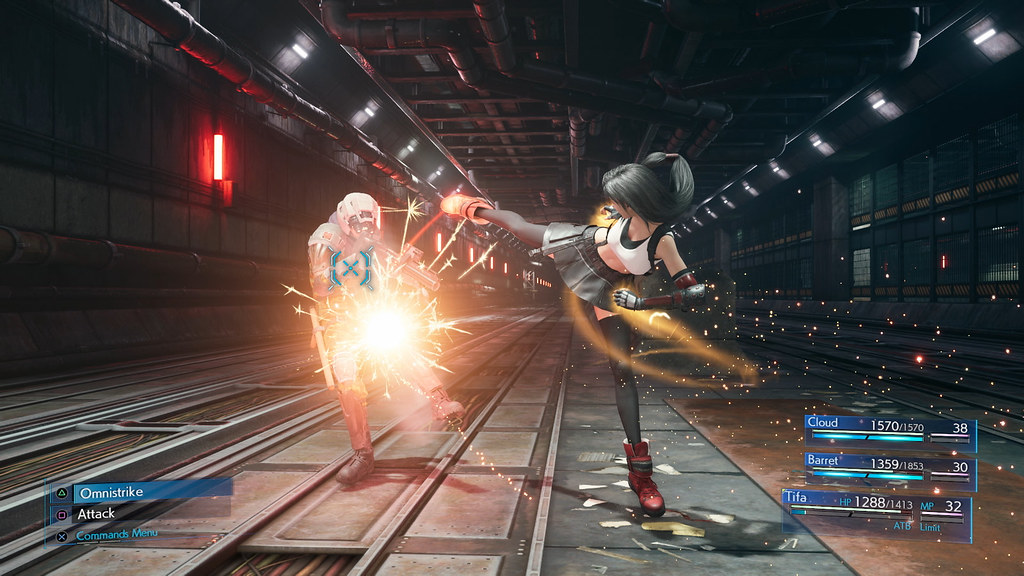
Most of the time, however, that still may not be enough to defeat them. Even some of the weaker enemies in the remake may have an ability or two that can deal a fair bit of damage or can make fights a little more difficult if you don’t know how to handle them swiftly. This is where staggering becomes a huge priority in battles—a returning mechanic from Final Fantasy XIII, but with a few subtle design tweaks that works well in FFVIIR. Each enemy unit on the battlefield has a stagger bar which can be filled by hitting them with specific actions. Depending on the enemy type, certain abilities and spells will work more effectively than others, and if you land them while they are ‘pressured,’ their bars will fill up even faster. Filling to full will ‘stagger’ the enemies, rendering them immobile and allowing you to deal big damage for a short amount of time. Knowing which attack to perform and which party member to control in that small time frame will greatly determine your overall success in battles.
Speaking of party members, each of them have unique play styles and stats which can be taken advantage of. Cloud is the most versatile and balanced party member of the bunch; he can leap towards enemies and deal either focused or wide area-of-effect attacks depending on which fighting stance he’s in. Barret is a walking tank that specializes in long-range attacks and can hit enemies from far-to-reach places. Tifa can unleash a flurry of short-range attacks in quick succession which can be augmented for improved effect. Aerith is a strong magic caster who works best when dealing enemies from afar, and can provide unique support to other party members. Learning their distinct quirks is a very straightforward process as they’re not overly complicated, but there’s enough nuance in each of them to understand how and when they can be best used, and it was a joy discovering what they were capable of.
In the spirit of the original game, up to three party members can be present on the battlefield. You can freely switch between them on the fly using the directional buttons on the controller, but when left alone, those members will be AI-controlled and perform only basic actions. For what it’s worth, not once did they seem to operate in a way that went against my expectations, especially during the tougher battles. You can still issue their commands as long as their ATB meters are filled (which is important), but I personally would have liked more ways to customize how they could react in battles. Somewhat of a solution to this lies in the game’s expected Materia system.
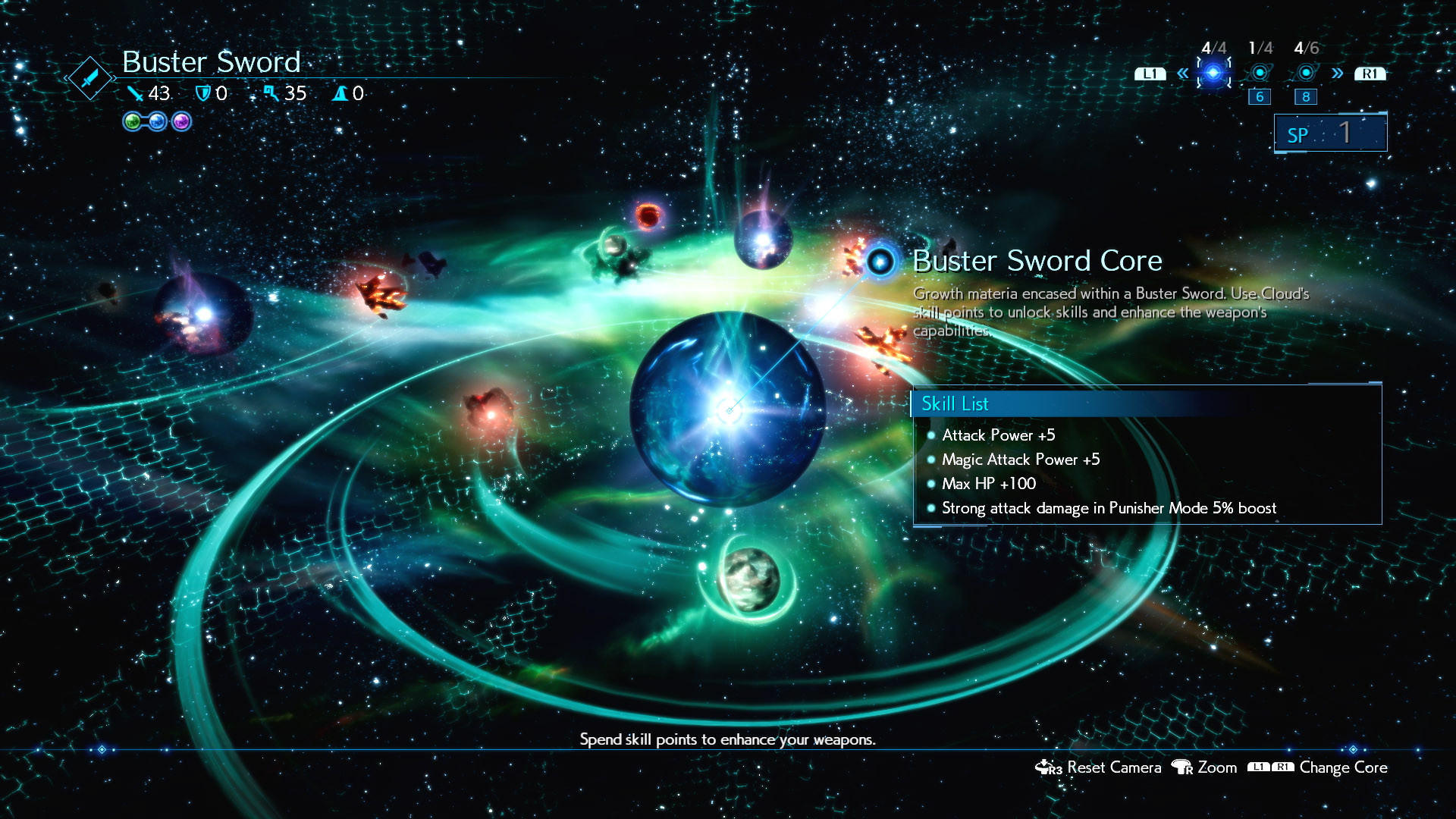
The Materia system makes a return for the remake, and it functions largely the same as it did in the original. Materia are items that grant abilities and/or stat modifications to characters when equipped. There are five types of Materia in FFVIIR, and each of them are color-coded to distinguish how they will function. Magic spells, auto-triggered abilities and summons all come from Materia, and they, among others, give party members the necessary edge for fights. Some of them can be purchased or unlocked as you progress through the story, while others can only be found from exploring the different areas of Midgar. While customizing your party members’ equipment, the UI informs what each of your collected Materia can do, and my time spent settling which to equip and how ultimately became a rewarding process.
There are also various progression systems at play for your party members and equipment, and leveling them up gives you access to increased stats, buffs and improved abilities. There’s just so much to appreciate with the combat in FFVIIR. The journey of mastering all of its systems is deeply rewarding, and I’m very eager to test my newfound knowledge of them with the game’s unlockable hard mode.
The visuals in this game are downright stunning. Shifting to a full 3D presentation adds new life to an over 20-year-old concept. Walking through the streets and visiting the locales of Midgar especially at night is so surreal. Lighting reacts to various surfaces in a genuine and slightly stylistic manner, and how it’s used throughout the remake evokes a range of emotions that fits perfectly to the environments they lit. This is especially true in the many set pieces throughout the game, including the Shinra Headquarters and Wall Market. Cloud’s spiky blond hair in particular dynamically changes its appearance according to the light source it comes in contact with. It’s a strangely satisfying detail I notice every time I played through the game.
Music plays a big role in FFVIIR, and its overall collection is fittingly diverse. On top of the amazing rearranged classic tracks composed by Nobuo Uematsu, the soundtrack also includes contributions from Masashi Hamauzu and Mitsuto Suzuki. If you’ve heard their music from other games or albums, you’ll know what to expect and if not, you’re in for a cool surprise. There are new tracks in the remake that are played during certain points of the story and gameplay; some of them use motifs from older Final Fantasy VII music, while others are completely original. They paint an appropriate and interesting feel to those moments, and they range from atmospheric and epic to catchy, cool, intense and more.
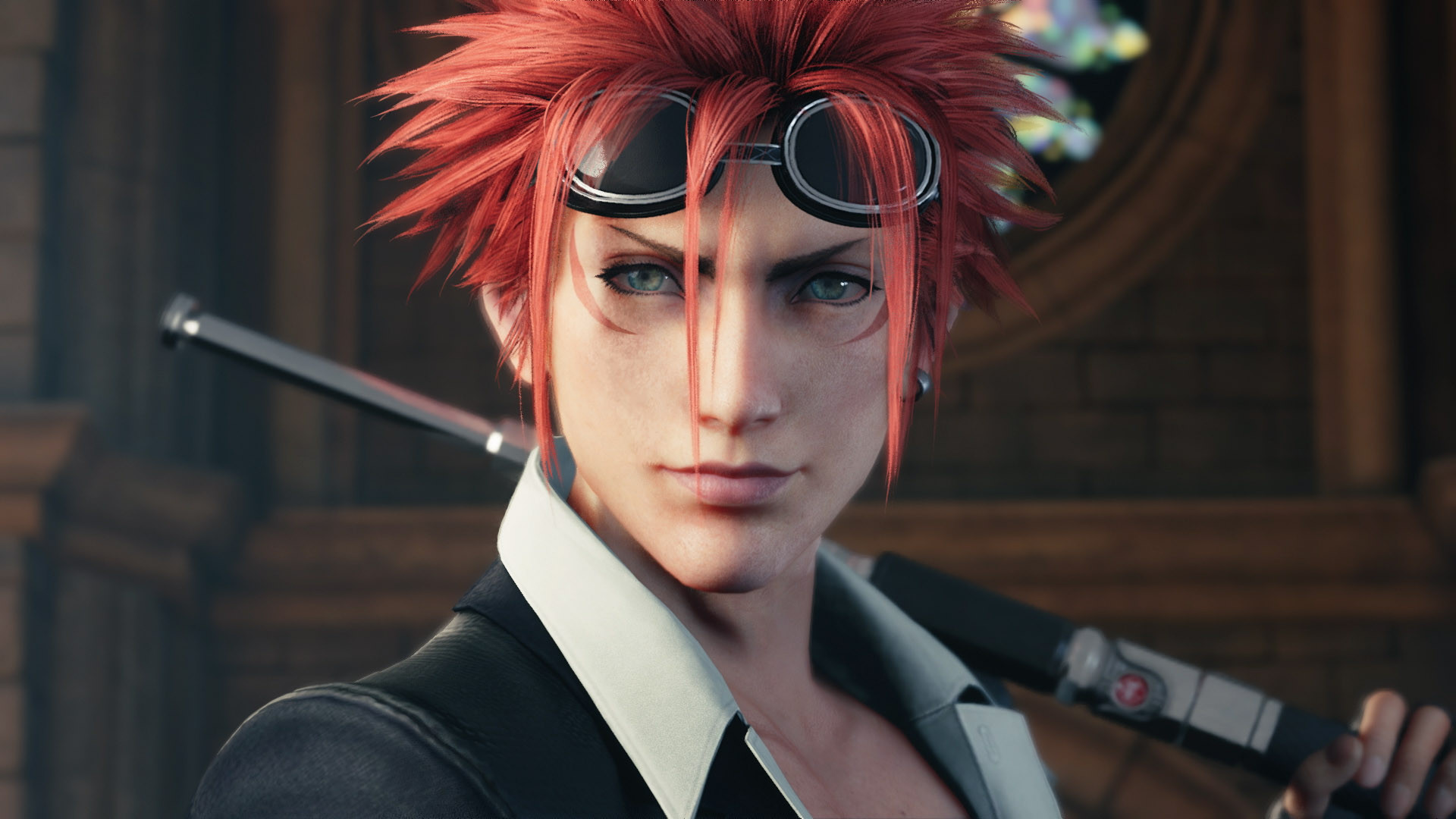
This is the best single-player Final Fantasy title I’ve played in years, and a new favorite of mine. Final Fantasy VII Remake goes above and beyond to honor its source material while opening itself up to a host of modern changes that really work for the better. Gorgeous graphics and mood lighting backed by a strong art direction gives Midgar and its sprawling areas a clear visual identity.
The writing is at its best when the characters are front and center, and it’s great that this happens often. Hearing how they naturally converse with each other reinforces their relationships and place in the story. Key events from the original game are appropriately emphasized in the remake, and they’re all backed by a fantastic music score that beautifully rearranges the melodies of old while introducing a few new tracks that heightens the adrenaline of battles. Combat is fast and extravagant for all the right reasons. There’s plenty of depth and nuance to sink your teeth into, and its clever blend of real-time action and turn-based strategy make it one of the best systems I’ve played in an RPG.
I’m very curious to see what the development team at Square Enix will do to further iterate all of those elements for the sequel. However long that may take for it to arrive, they’ve done plenty enough now to earn my patience for a good while.
Disclaimer: A retail copy of Final Fantasy VII Remake for PlayStation 4 was purchased for review by the reviewer.

Recent Comments